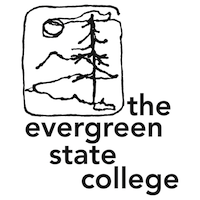Below is a summary of the abstract you submitted. Presenting author(s) is shown in bold.
If any changes need to be made, you can modify the abstract or change the authors.
You can also download a .docx version of this abstract.
If there are any problems, please email Dan at dar78@pitt.edu and he'll take care of them!
This abstract was last modified on April 21, 2015 at 11:37 p.m..

The Evergreen State College was giving a mandate to experiment in education, with an emphasis on collaborative interdisciplinary learning. Much of our curricular content is delivered by team-taught multi-quarter programs in which all students and faculty stay together as a learning community for the duration of the program. For two years the SEA-PHAGE program was used with the interdisciplinary program Introduction to Natural Sciences. In the 2013-14 academic year this program combined work in introductory biology, introductory chemistry, and algebra based physics, taught by three faculty to 75 students. In the 2014-2015, the program was offered again with introductory chemistry and biology, but with the third faculty member being an additional biologist with a stronger background in ecology and evolutionary biology. This work will describe in more detail how the SEA-PHAGE program is integrated into the work the students are doing in this broadly focused introduction to science.
Specific examples will be provided of ways in which course content related to chemistry, physics, quantitative skills, and reading of scientific literature was integrated and linked to ideas and methods students were using with their SEA-PHAGE work.
Our student mix in the SEA-PHAGE program also differs in that few of the students enrolled in this program are freshman direct from high school. A large number are students who are returning to school after pauses for work, family, or military service. Another significant portion of our students are individuals who are turning to a science based major relatively late in their college career. We hope to provide these groups of students with the educational benefits of this course research experience and will provide reactions from these groups of students to the SEA-PHAGE experience.
In the future we are planning to add a computer scientist as a member of the faculty team to take advantage of the opportunities the bioinformatics work would provide for teaching concepts in computer science.
We have also experimented with methods to stream-line the delivery of sterile supplies to larger numbers of students and to manage the storage and self-management of students’ Petri dishes. We will describe some inexpensive solutions we have found for some of these laboratory issues that can arise as program size increase.

